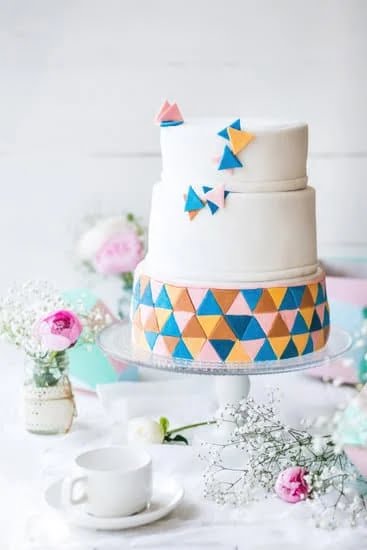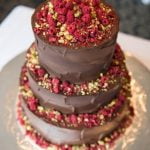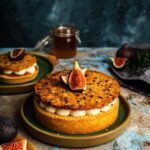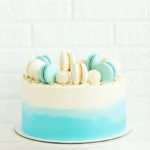Bundt cakes are a beloved classic in the world of baking, known for their signature ring shape and delicious flavor. One of the key elements that make a Bundt cake truly stand out is the frosting. In this article, we will delve into the art of decorating Bundt cakes with frosting, covering everything from choosing the right type of frosting to troubleshooting common issues.
When it comes to decorating a Bundt cake with frosting, there are endless possibilities for creating a visually stunning and delectable dessert. Whether you’re preparing a Bundt cake for a special occasion or simply want to elevate your baking skills, mastering the art of frosting is essential.
In the following sections, we will explore various aspects of decorating Bundt cakes with frosting, including selecting the perfect frosting for your cake, preparing the cake’s surface for frosting, techniques for applying frosting, creative decorating ideas for different occasions, troubleshooting common issues, and tips for storing and serving frosted Bundt cakes. Additionally, we’ll include a bonus section featuring homemade frosting recipes to inspire your creativity in the kitchen.
So grab your apron and let’s get ready to transform ordinary Bundt cakes into extraordinary works of edible art.
Choosing the Right Type of Frosting for Your Bundt Cake
When it comes to choosing the right type of frosting for your Bundt cake, there are several options to consider. The type of frosting you choose can greatly impact the overall flavor and appearance of your cake. Whether you prefer a rich and creamy buttercream, a glossy and smooth glaze, or a decadent cream cheese frosting, there are a few factors to keep in mind when making your decision.
Consider the Flavor
One of the first things to consider when choosing a frosting for your Bundt cake is the flavor profile you want to achieve. If you’re looking for something classic and versatile, a vanilla or chocolate buttercream may be the way to go. For a tangy and slightly tart option, cream cheese frosting could be a great choice. Alternatively, if you want something light and refreshing, a citrus glaze might be the perfect fit.
Think About Texture
In addition to flavor, it’s important to think about the texture of the frosting. Some frostings, like buttercream, are thick and creamy, making them ideal for piping intricate designs onto your Bundt cake. On the other hand, glazes are thinner and pourable, creating a smooth and glossy finish. Consider what kind of texture will best complement the shape and design of your Bundt cake.
Take Dietary Restrictions Into Account
Another important factor in choosing the right frosting for your Bundt cake is any dietary restrictions or preferences that you or your guests may have. If you need to accommodate someone with dairy allergies or vegan dietary requirements, there are plenty of alternative frosting recipes that use non-dairy ingredients like coconut milk or margarine.
It’s always helpful to have a few different options on hand to ensure that all of your guests can enjoy a slice of frosted Bundt cake without worry. By carefully considering these factors – flavor, texture, and dietary accommodations – you can confidently choose the perfect frosting for your Bundt cake that will enhance its taste and presentation.
Preparing the Bundt Cake for Frosting
When it comes to decorating a Bundt cake with frosting, one crucial step is preparing the cake itself to ensure a smooth surface for the frosting. Whether you’re using a classic vanilla glaze or a rich cream cheese frosting, taking the time to properly prepare the cake can make all the difference in the final presentation.
Cooling and Leveling the Cake
After your Bundt cake has finished baking, it’s important to allow it to cool completely before attempting to frost it. This prevents the frosting from melting or becoming too runny. Once cooled, consider leveling the top of the cake if there is a large dome or uneven surface. This can be done using a serrated knife or a cake leveler, ensuring that the frosting will sit evenly on top of the cake.
Crumb Coating for Smoothness
To achieve a flawless finish when decorating your Bundt cake with frosting, consider applying a thin layer of frosting as a crumb coat. This initial layer “locks in” any loose crumbs on the surface of the cake, preventing them from ending up in your final layer of frosting. After applying this crumb coat, allow it to set before adding another layer of frosting for a smooth and professional-looking finish.
Chilling for Better Adherence
Before adding your final layer of frosting to the Bundt cake, consider chilling it in the refrigerator for 15-20 minutes. This brief period allows the frosting to firm up slightly, making it easier to apply additional layers and decorations without disturbing the initial coat. Additionally, this can help prevent any potential drips or smudges while working with more intricate designs or piping techniques.
By following these tips and tricks for preparing your Bundt cake for frosting, you can ensure that your final decoration looks clean, polished, and visually appealing – no matter what type of occasion you are celebrating.
Techniques for Applying Frosting to a Bundt Cake
When it comes to decorating a Bundt cake with frosting, there are several different techniques you can use to achieve beautiful and delicious results. Piping, spreading, and drizzling are three popular methods for applying frosting to a Bundt cake, each offering its own unique look and texture.
Piping involves using a pastry bag fitted with a decorative tip to create intricate designs and patterns on the surface of the cake. This technique is great for adding flair and elegance to your Bundt cake, especially for special occasions like weddings or milestone birthdays.
Additionally, spreading the frosting evenly over the cake with an offset spatula is a simple yet effective way to achieve a smooth and polished appearance. This method works well for creating a classic frosted look that is sure to impress your guests.
Drizzling is another popular method for applying frosting to a Bundt cake, particularly if you want to add a touch of decadence and flavor. You can drizzle melted chocolate, caramel, or flavored glazes over the top of the cake in an artful manner, creating visually stunning swirls and designs that are as beautiful as they are delicious.
In summary, the key to successfully decorating a Bundt cake with frosting lies in choosing the right technique that suits your desired aesthetic and occasion. Whether you opt for piping, spreading, or drizzling, each method offers its own unique way to enhance the appearance and flavor of your Bundt cake.
| Technique | Description |
|---|---|
| Piping | Using a pastry bag with decorative tip to create intricate designs. |
| Spreading | Evenly spreading frosting over the surface of the cake with an offset spatula. |
| Drizzling | Adding melted chocolate, caramel or glaze in an artful manner over the top of the cake. |
Decorating Ideas and Inspiration for Different Occasions
Decorating a Bundt cake with frosting can take it from a simple dessert to a stunning centerpiece for any occasion. Whether you’re celebrating a birthday, holiday, wedding, or any other special event, there are endless ways to get creative with your decorations.
For birthdays, consider using brightly colored frostings and fun sprinkles to create a festive look. You can also personalize the cake by piping on the name of the birthday person or adding decorative candles. For holidays, think about seasonal flavors and colors – for example, green frosting and edible gold stars for Christmas, or pastel hues for Easter. Weddings call for elegant and romantic designs, such as delicate floral patterns or smooth white frosting accented with pearls or fondant decorations.
When it comes to choosing the right decorations for your Bundt cake, consider the theme of the event and the preferences of the guest of honor. If you’re feeling stuck on ideas, there are countless sources of inspiration online – from social media platforms like Pinterest and Instagram to baking blogs and websites dedicated to cake decorating.
Remember that practice makes perfect when it comes to decorating with frosting. Don’t be afraid to experiment with different techniques and tools to achieve the look you want. And most importantly, have fun with it. Decorating a Bundt cake should be an enjoyable and rewarding experience for both the baker and those who get to enjoy the delicious final product.
Troubleshooting Common Frosting Issues on Bundt Cakes
When decorating a Bundt cake with frosting, it’s important to take into account the potential issues that may arise during the process. Common problems include lumps in the frosting, air bubbles forming on the surface, and uneven coverage. These issues can detract from the overall appearance of the cake, so it’s essential to know how to troubleshoot and fix them.
Below are some tips for troubleshooting common frosting issues on Bundt cakes:
- Lumps: If your frosting has lumps in it, you can try to smooth them out by using a whisk or passing the frosting through a fine-mesh sieve. Another option is to warm the frosting slightly in the microwave and then whisk it until smooth.
- Air Bubbles: To prevent air bubbles from forming on the surface of your frosted Bundt cake, be sure to spread the frosting evenly and gently across the cake. You can also use a small offset spatula to pop any air bubbles that appear as you frost.
- Uneven Coverage: If you find that your Bundt cake has uneven coverage of frosting, you can use a bench scraper or an icing smoother to carefully even out the layer of frosting. Another option is to apply a second coat of frosting to achieve a more uniform appearance.
By being aware of these potential issues and knowing how to address them, you can ensure that your frosted Bundt cake looks as beautiful as it tastes. With these troubleshooting tips in mind, you’ll be better prepared to overcome any challenges that may arise during the decorating process.
Tips for Storing and Serving a Frosted Bundt Cake to Maintain Its Freshness and Appearance
Storing and serving a frosted Bundt cake is just as important as decorating it with frosting. Proper storage and presentation can ensure that the cake stays fresh and looks its best when it’s time to serve. Here are some tips for storing and serving a frosted Bundt cake to maintain its freshness and appearance.
First, it’s essential to store the frosted Bundt cake properly to keep it moist and flavorful. Once the cake has been decorated with frosting, it should be kept in an airtight container at room temperature or in the refrigerator, depending on the type of frosting used.
Buttercream and cream cheese frostings can usually be stored at room temperature for up to 3 days, while whipped cream or meringue-based frostings should be refrigerated. When refrigerating a frosted Bundt cake, make sure to cover it with plastic wrap or place it in a cake carrier to prevent the frosting from absorbing any odors from the refrigerator.
When it comes time to serve the frosted Bundt cake, there are several presentation tips to keep in mind. For a special occasion or celebration, consider using a decorative cake stand or platter to showcase the beauty of the frosted cake. Before slicing into the cake, allow it to come to room temperature if it has been refrigerated.
This will help bring out the full flavor and texture of both the cake and frosting. When serving individual slices, use a sharp knife dipped in hot water and wiped dry between cuts to ensure clean edges and smooth slices.
Lastly, being mindful of proper storage and serving techniques can help maintain both the freshness and appearance of a frosted Bundt cake, allowing everyone to enjoy not only its delicious taste but also its beautiful decoration.
| Storage Tips | Serving Tips |
|---|---|
| Store in airtight container at room temp or fridge | Use decorative cake stand or platter for presentation |
| Refrigerate whipped cream or meringue-based frostings | Allow cake to come to room temp before serving if refrigerated |
| Keep covered with plastic wrap when refrigerating | Use sharp knife dipped in hot water for clean slices |
Bonus Recipe
Frosting is an essential element in enhancing the appearance and flavor of a Bundt cake. While store-bought frosting can be convenient, making your own homemade frosting allows for limitless customization and creativity. In this section, we will explore a variety of homemade frosting recipes for Bundt cakes, offering different flavors and variations to try for your next baking adventure.
One popular choice for frosting a Bundt cake is classic cream cheese frosting. This rich and tangy frosting pairs perfectly with moist and dense Bundt cakes, adding a delightful contrast of flavors. To make cream cheese frosting, simply beat together room temperature cream cheese, butter, powdered sugar, and vanilla extract until smooth and creamy. For a slightly tangier version, you can also add a splash of lemon juice or finely grated lemon zest to the mixture.
For those who enjoy chocolatey indulgence, a decadent chocolate ganache makes for an irresistible topping on a Bundt cake. Ganache is made by heating heavy cream until just simmering and then pouring it over chopped chocolate. Allow the mixture to sit for a few minutes before stirring until smooth and glossy. Once cooled slightly but still pourable, drizzle the ganache over your cooled Bundt cake for an elegant finish.
If you’re looking for a lighter option, consider trying a fluffy whipped cream frosting. Simply whip cold heavy cream with powdered sugar and vanilla extract until soft peaks form. This airy and delicate frosting is perfect for adding a touch of sweetness without overwhelming the flavors of the cake itself.
Whether you opt for cream cheese frosting, chocolate ganache, whipped cream frosting, or any other variation, making your own homemade frosting allows you to tailor the flavor and texture to suit your preferences. Experiment with different ingredients and techniques to find the perfect complement to your favorite Bundt cake recipe.
Conclusion
In conclusion, the art of decorating a Bundt cake with frosting is an essential element in elevating both its appearance and flavor. Whether it’s a classic vanilla glaze for a simple everyday treat or an elaborate cream cheese frosting for a special occasion, the right type of frosting can truly make a difference. Additionally, mastering the techniques for preparing and applying frosting to a Bundt cake is equally important in achieving a smooth and professional-looking finish.
When it comes to decorating your Bundt cake with frosting, the options are limitless. From piping intricate designs to spreading smooth layers or drizzling elegant patterns, there are numerous techniques to explore and experiment with. And let’s not forget about incorporating edible decorations like fresh fruit, chocolate shavings, or sprinkles to add that extra touch of visual appeal.
Ultimately, the process of learning how to decorate Bundt cake with frosting is both an art and a science. With practice and creativity, anyone can master the art of frosting and take their Bundt cakes from ordinary to extraordinary. The satisfaction of presenting a beautifully frosted Bundt cake that not only looks stunning but also tastes delicious is truly rewarding. So don’t be afraid to get creative with your frosting decorations and let your imagination run wild.
Frequently Asked Questions
Can You Use Regular Frosting on a Bundt Cake?
Regular frosting can be used on a Bundt cake, but it may not adhere as well to the ridges and grooves of the cake. It’s best to apply a thin layer or opt for a glaze instead.
How Do You Decorate the Top of a Bundt Cake?
Decorating the top of a Bundt cake can be done by drizzling a glaze or ganache over the cake. It can also be adorned with fresh fruit, edible flowers, powdered sugar, or even a simple sprinkle of cinnamon.
How to Decorate a Bundt Cake With Buttercream Frosting?
Buttercream frosting can be used to decorate a Bundt cake by piping it onto the cake in decorative patterns or rosettes. The frosting should be thick enough to hold its shape but still fluffy and easy to spread. It’s best to let the frosting set slightly before serving to avoid any smudging or melting.

Welcome to our cake decorating blog! My name is Destiny Flores, and I am the proud owner of a cake decorating business named Cake Karma. Our mission is to provide delicious, beautiful cakes for all occasions. We specialize in creating custom cakes that are tailored specifically to each customer’s individual needs and tastes.





